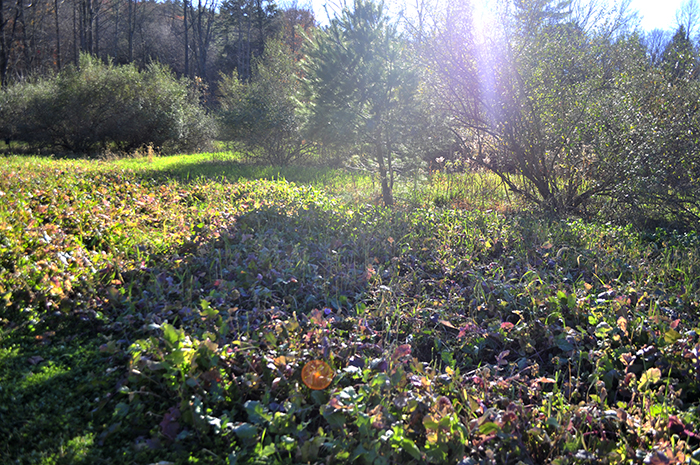

With colder weather on the horizon, our wildlife food plots are becoming increasingly crucial to the local wildlife. Food plots are small clearings in farmland or wooded areas that are dedicated to planting food supplements for various species including white-tailed deer, turkey, mourning doves, and bobwhite quail. Though food plots are often solely used to bring in prey for more accessible hunting, at Solar Innovations® we are dedicated to working with our land to create a natural, sustainable ecosystem with healthy wildlife populations.
We planted a mixture of high protein energy food for deer and turkey, including winter greens, turnips, radishes, brassica, and winter wheat. Deer will consume approximately 75% of their diet on food plots, and the availability of protein-rich natural food allows for healthier populations. All of the crop varieties planted grow at different rates and—if not overgrazed by the animals—will last the entire winter.

Deer have grazed the plot evenly, but leave beets and other root vegetables until late winter when they become sweeter.
If starting a new food plot and unsure of the wildlife population, plant plots of different sizes to evaluate the number of animals feeding from your land. Then, adjust the size of your plots accordingly the following year. Food plots should appear natural so wildlife feels safe approaching them. Having a protective surrounding of trees and brush around the plot will help animals navigate to your crops without fear. In addition, the plot should be irregularly shaped and have crops scattered about rather than in neat rows or patches. Maintenance of food plots is simple; even though the crop mixture is annual and must be replanted each year, tilling the remaining vegetation back into the soil in the spring will add natural organic fertilizers.
Throughout the winter, the vegetation gets colder and the plants release more sugar content to the leaves, making the plants very desirable to wildlife. Some plants, like beets and radishes, offer both greens and fruit even in the coldest months, and grains like winter wheat will continue to grow and stay green. Wildlife conservation food plots are critical to help animals like deer maintain healthy digestive systems, which they rely on when browsing to survive the cold temperatures.

